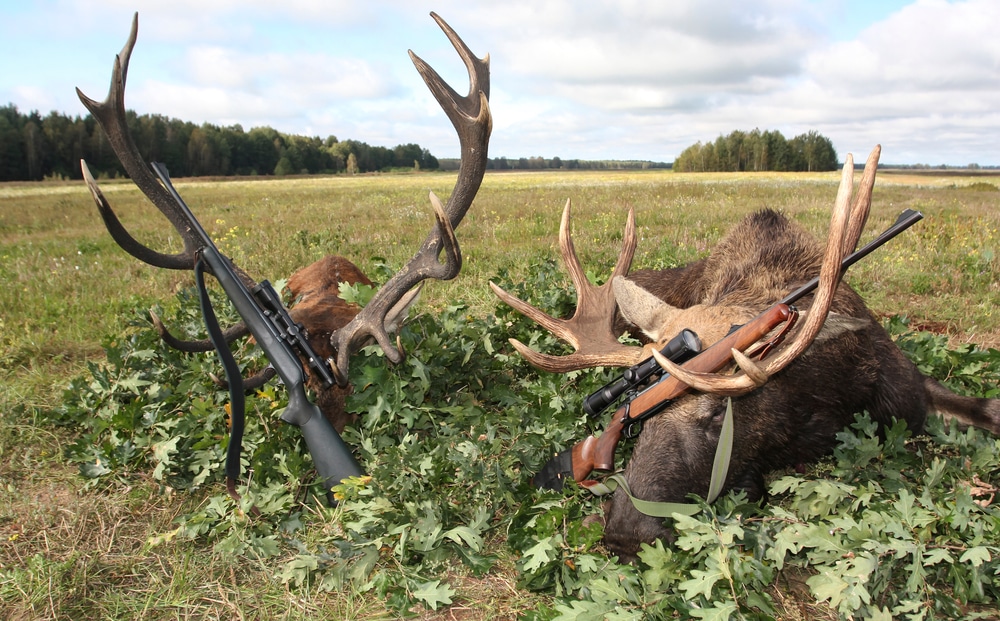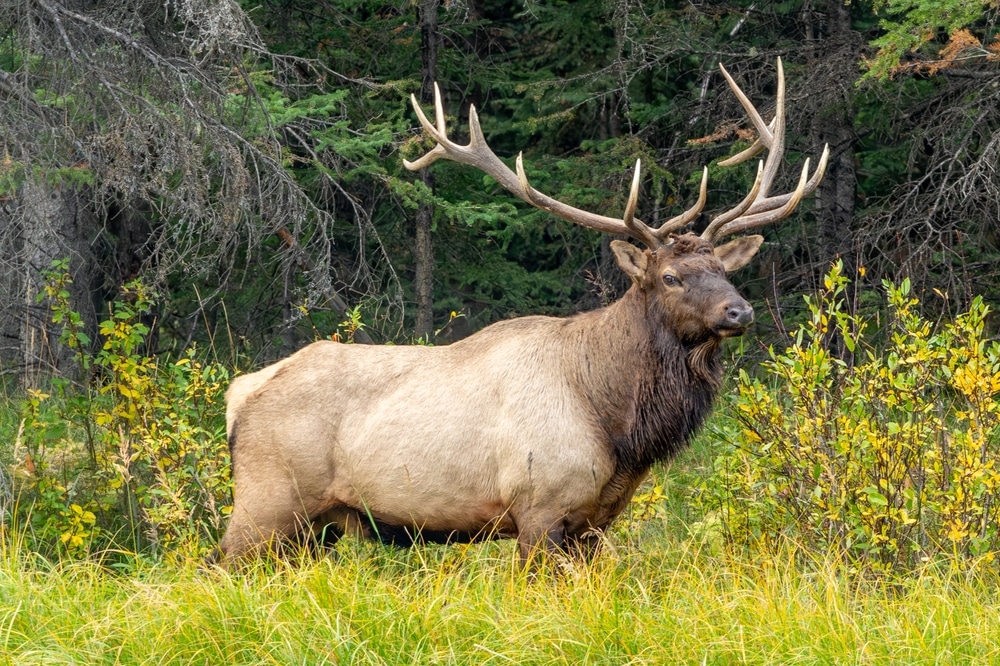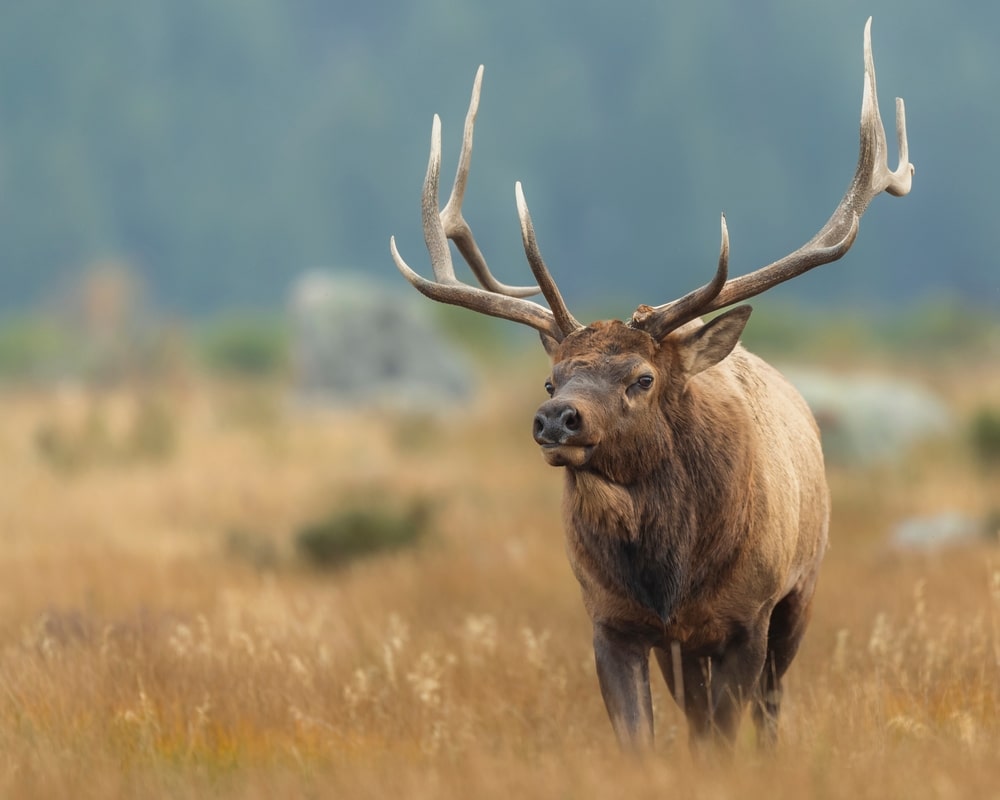Table of Contents
Hunters love being in nature, tracking animals with care and skills. They respect the animals they hunt, but they also love the challenge and thrill of the chase. For them, making a genuine connection with the wilderness and its people is just as important as slaying prey. Come with us as we enter a world where the excitement of the chase blends with the beauty of nature. Let’s talk about the hunters who love to hunt elk.
A good trip or a dark outing can be determined by preparation, especially for elk hunting. You must research the regions you intend to hunt, considering elk populations, topography, and hunting laws. Finding areas teeming with elk herds in various environments, from rocky mountains to wide-open meadows, will greatly increase your odds of having a successful hunt. Topographic maps, internet resources, and regional wildlife organizations can all offer insightful information about possible hunting locations.
It is choosing the appropriate weapon for your hunting style. Whether it be a rifle or a bow, is equally important. Accuracy and moral kills depend on selecting a dependable gun or well-tuned bow that fits your hunting terrain and ability level. Furthermore, obtaining the required elk tags well in advance guarantees adherence to hunting laws and facilitates a more enjoyable hunting experience.
If you’re new to elk hunting or looking for professional advice, you should consider going on a guided hunt. They may give you access to top hunting spots and vital knowledge. On the other hand, DIY hunts provide you the opportunity to test your hunting skills and visit far-off natural locations. Let’s dive deep into the essential tips for elk hunting in our detailed guide given below. Let’s start!
wait before going on a journey lets have a quick view on 6 ESSENTIAL HUNTING AND ADVENTURE CAMP GEAR TIPS

Investigate the Areas You Hunt
It is important to extensively study possible hunting places before embarking on your elk hunting journey. Elk populations, topography, accessibility, and hunting laws are a few things to start with. Choosing places where elk herds are plentiful will significantly boost your chances of seeing the game. Elk frequently favor areas with various habitat types, such as rough mountains, open meadows, and deep woods. To obtain pertinent information about potential hunting sites, consult online resources, topographic maps, and regional wildlife organizations. You can increase your chances of a successful hunt by locating good elk habitats by devoting time to research.
Pick the Right Weapon
Whether you like a rifle or bow hunting, selecting the appropriate weapon is essential for a successful elk hunt. Choosing a dependable rifle or a well-tuned bow can make all the difference when hunting cow elk when accuracy is essential. Think about things like how well you shoot, the type of area you plan to hunt in, and how far you usually fire. For hunters who hunt with rifles, choose a weapon that can produce morally sound kills in caliber and accuracy. Bowhunters should ensure their equipment is tuned correctly and practice often to stay proficient. Study state laws governing the sorts of weapons allowed and any particular limitations on hunting gear. You can improve your chances of having an ethical and successful hunt by choosing the appropriate weapon for your skill level and hunting terrain.
Safe Elk Secure Marks
The most important aspect of getting ready for your hunt is getting the required elk tags well in advance. Investigate state-specific laws and quotas to learn about tag availability and application procedures. Ensure you follow the hunting seasons and any special rules for bull elk or cow hunts. Preparing and submitting applications by the deadline is important because some states assign tags through a lottery or preference point system. To improve your flexibility and hunting options, you may also want to think about buying tags for different seasons or hunting units. Elk tags can be obtained ahead of time, and by following all regulations, you can stay out of trouble and concentrate on the thrill of your next hunt.
Think about guided hunts.
A guided hunt provides invaluable experience and access to top hunting areas for people new to elk hunting or looking for experienced advice. Proficient guides can increase your chances of success by sharing their knowledge of elk behavior and habitat and by providing individualized teaching on hunting tactics. Transportation, housing, and meals are frequently included in guided hunts, so you may concentrate entirely on the hunt rather than worrying about the little things. To increase your chances of an effective hunt, guides can also route you to regions with high elk activity because they are familiar with the local topography. Read reviews from other customers, research reliable outfitters, and discuss your preferences and expectations with the guide before scheduling a guided hunt. You can have an exciting and fulfilling elk hunting experience under the direction of experts by opting for a guided hunt.

Scout and Stalk
Success in elk hunting requires a mastery of the spot and stalk technique. Using geographical characteristics and natural cover to hide your movements, this approach entails approaching elk on foot stealthily. In the pre-season, start by surveying possible hunting locations to find elk activity, including feeding spots, bedding sites, and transit routes. Look for elk signs, such as tracks, droppings, or antler rubs, throughout large areas using binoculars and spotting scopes. Avoid detection by alert elk by paying close attention to wind direction and thermals. Use the cover that is available to you and make as little noise as possible when stalking. Proceed slowly and carefully. Long stretches of glassing and waiting for the ideal shot opportunity are to be expected. Gaining spot and stalk hunting proficiency can improve your chances of catching the elusive elk and making a good harvest.
Know the Behavior of Elks
To increase your chances of success and anticipate elk movements, you must become familiar with their activity patterns throughout the hunting season. To properly pattern elk activity, learn about the habits of rutting, migration routes, and preferred habitat types. Focus on regions where elk are likely to eat during the early part of the season, such as meadows and agricultural fields, as these are rich in food supplies. Aim for regions with plenty of shelter and water supplies as the rut draws near. This is where elk gather to breed. Focus on regions transitioning between bedding and feeding areas in the late season. Additionally, pay attention to areas where natural obstacles like canyons or ridgelines funnel elk movement. You can increase your chances of having a successful hunt by being aware of how elk behave and modifying your hunting tactics accordingly.
Selecting the Ideal State for Elk Hunting
Investigating several states with high elk populations and advantageous hunting laws is crucial when organizing an elk trip. Top elk hunting spots on both public and private lands may be found in states like Colorado, Wyoming, Montana, and Idaho. When selecting a hunting location, consider elements including trophy potential, pressure from hunters, accessibility, and elk numbers. Contact state wildlife agencies and local biologists for current information on harvest statistics, elk populations, and hunting restrictions. Research your alternatives for accessible and reasonably priced hunting on public lands as well, such as state parks, wildlife management areas, and national forests. Based on your needs and tastes, you can select the ideal state for elk hunting and have a successful and enjoyable time hunting outdoors.

Accept Archery Hunting
Elk hunting becomes even more challenging and exciting when archery hunting is included, as it demands patience, subtlety, and accuracy. Develop your shooting techniques and use moral shot placement to guarantee clean kills and reduce the possibility of injuring animals. Archery elk hunting offers a more intimate and natural relationship to wildlife. Making it an extremely fulfilling activity for many hunters. Give your bow plenty of practice before the hunting season starts to develop consistency and confidence. Learn about elk anatomy and practice shooting from several stances and perspectives to replicate actual hunting situations. A dependable bow sight or rangefinder, broadheads, and arrows are other essential pieces of archery gear you should consider purchasing. Embracing archery hunting will improve your elk hunting experience and help you make priceless field memories.
Seek after trophy bulls.
Hunting regions recognized for generating trophy bulls are important for hunters aiming for prize-quality elk. When choosing your hunting sites. Look up past statistics, speak with knowledgeable hunters or local biologists, and put quality before quantity. Seek locations with little hunting pressure and restricted access, allowing mature bulls to realize their maximum potential. To increase your chances of encountering a mature bull. Hunt during the rut when prize bulls are more talkative and active. Be ready to put in a lot of time and energy searching for prize bulls. Tracking them down, and waiting patiently for the ideal opportunity to take a shot. To increase your chances of success, think about working with an outfitter or guide experienced in trophy elk hunting. You can achieve your goal of capturing a superb trophy bull by searching for bulls in renowned hunting regions and using efficient hunting techniques..
Conclusion
In conclusion, elk hunting is an activity that combines expertise, adventure, and reverence for the natural world. Hunters can increase their chances of success while upholding moral standards by carefully vetting hunting regions, choosing suitable weapons, and obtaining required permissions. Understanding elk behavior and choosing good hunting places are essential to a memorable hunting experience. Whether you choose adventurous DIY projects or guided hunts. Furthermore, a fulfilling journey is guaranteed by adopting an archery-hunting mindset and making extensive travel plans.
To protect elk populations for future generations, hunters must prioritize protecting wildlife and follow hunting laws. In the end, elk hunting gives more than just the chance to catch a game. It’s also a chance to challenge oneself, establish a stronger bond with the natural world, and develop a greater respect for the outdoors. Along with the excitement of the pursuit and dedication to respecting wildlife and the regulations regulating it. Hunters bring these two things into the great outdoors.


